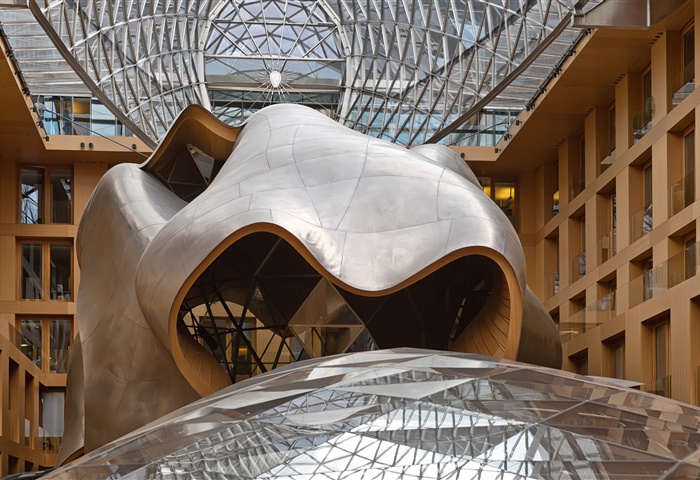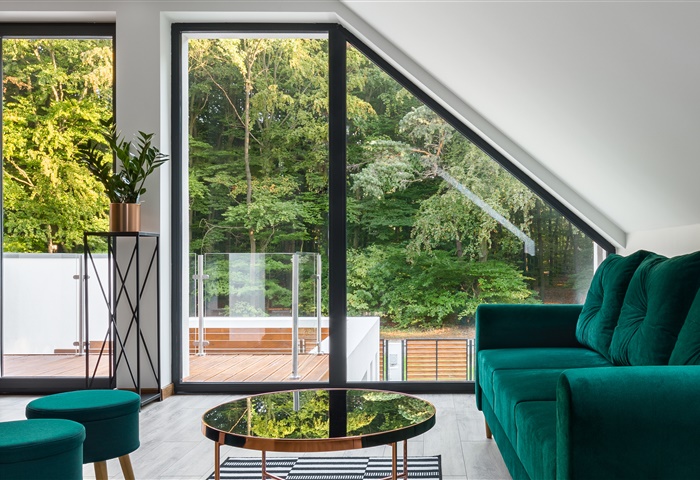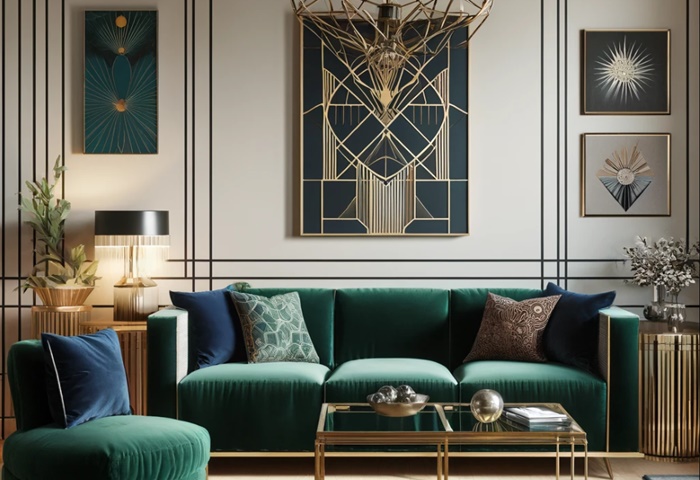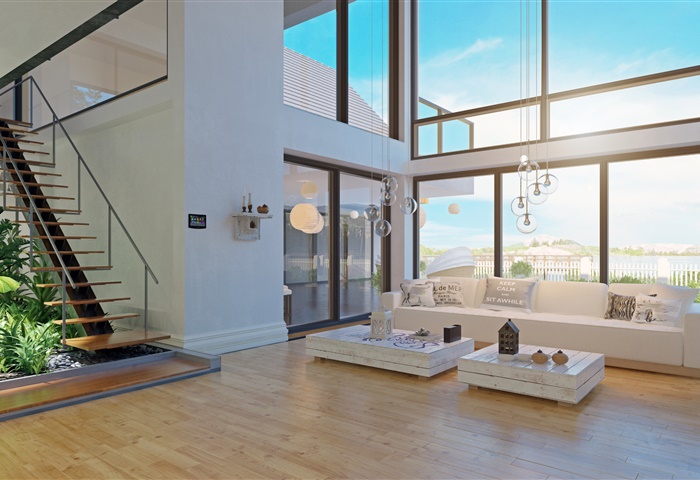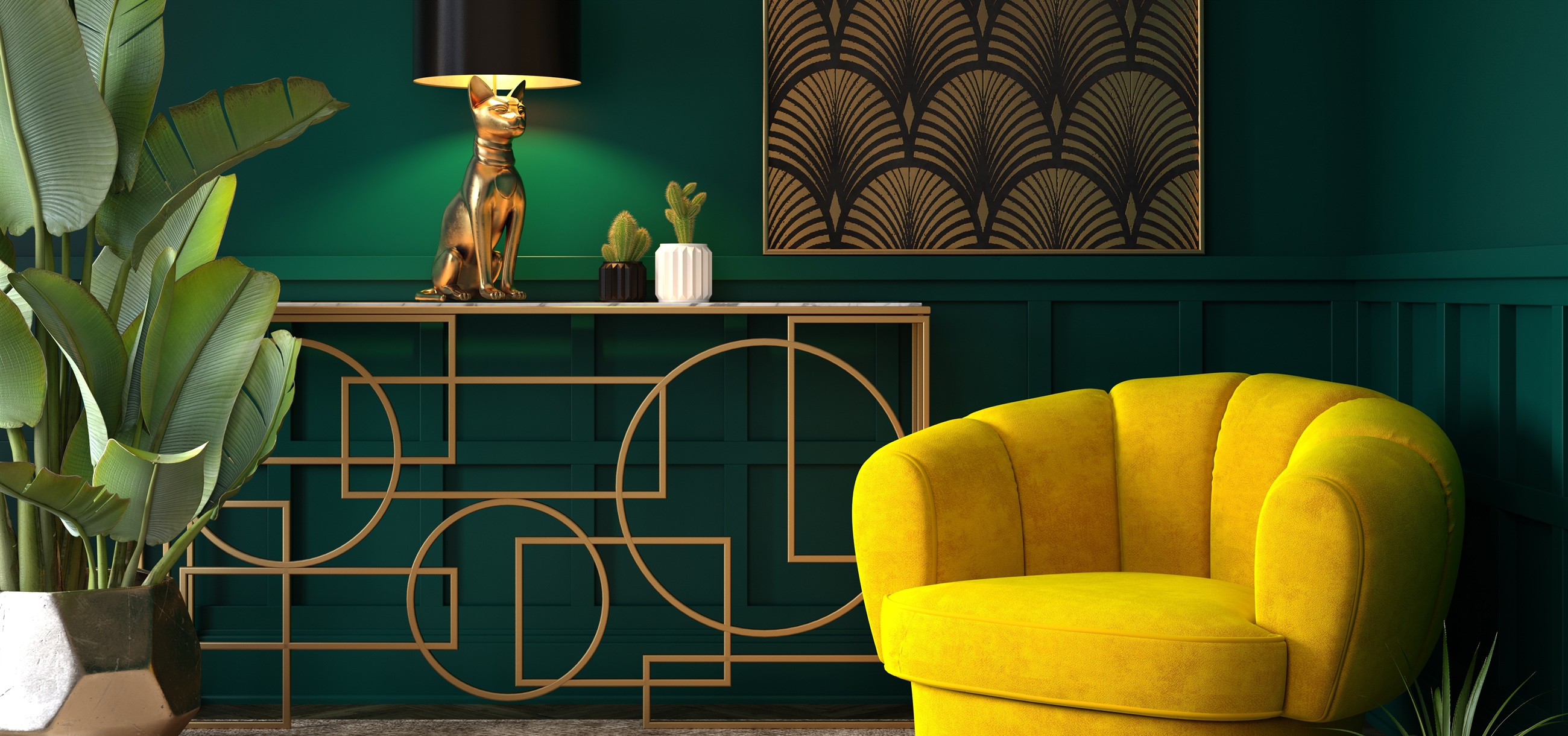
2/5/2024
Art Deco Style in Interior Decoration
What is Art Deco?
Art Deco, a style emblematic of the 1920s, epitomizes the pursuit of modernity and luxury. Its name derives from the abbreviation of the French name of the exhibition "Exposition Internationale des Arts Décoratifs et Industriels Modernes," which took place in Paris in 1925. This exhibition was pivotal in promoting the new style, which quickly gained international popularity.
The development of Art Deco was a response to the need to express post-war euphoria and faith in technological progress and industrialization. The style is characterized by geometric forms, the use of new materials such as steel, aluminum, stained glass, and exotic wood types, as well as bold color combinations. Art Deco is often described as eclectic, drawing inspiration from both avant-garde art movements and motifs from ancient civilizations like Egypt, Mesopotamia, and the Aztec.
Art Deco also draws from the avant-garde artistic movements of its time – futurism, constructivism, and cubism – which is reflected in dynamic forms and strong contrasts.
Materials used in this style are primarily metals (especially stainless steel, aluminum, and chrome), glass, mirrors, and exotic wood types. Lacquering was also commonly used to give objects shine and depth. Additionally, innovative synthetic materials such as bakelite and celluloid were utilized.
In architecture, Art Deco is manifested through the use of sharply defined forms, flat roofs, and numerous decorations on building facades. Significant elements also include grand entrances, often highlighted with metal details or glass panels. Characteristic of this period are also the tall vertical accents called finials, which aimed to emphasize the modernity and dynamism of developing metropolises.
In interior design, Art Deco is expressed through the creation of a harmonious whole consisting of furniture with simple but elegant forms, richly decorated fabrics, and decorative accessories. Lamps made of glass and metal with geometric shapes not only served a functional purpose but also constituted an important decorative element of the interior.
Art Deco was a response to the need to express optimism and faith in the technological progress of those times. The combination of functionality and decorativeness made this style perfect for both private residences of the affluent middle class and for public utilities – cinemas, hotels, or railway stations.
Spreading and Evolution
The impact of Art Deco on the interior design of the 1920s was invaluable. Interiors became more functional and organized while retaining decorative elements. Characteristic of this style was the combination of luxury and simplicity – rich decorative details coexisted with clear lines of furniture and accessories. Interior designers such as Émile-Jacques Ruhlmann and Jean-Michel Frank created works that were quintessentially Art Deco, combining high-quality craftsmanship with modern design.
The application of innovative production techniques allowed for the mass production of decorative elements and furniture in the Art Deco style, making them accessible to a wider audience. Elegant cinema lounges, hotels, and private homes echoed the aesthetics of transatlantic ships and luxury express trains – symbols of speed, progress, and comfort.
It's also important to highlight the international character of Art Deco. The style quickly spread beyond the borders of France – from the United States to South America and the Far East. In the USA, it was particularly visible in urban architecture (e.g., the Chrysler Building in New York), but also in the creation of residential interiors.
Characteristic Elements of Art Deco
The Art Deco style, embodying luxury and modernity of the 1920s and 1930s, continues to inspire interior design enthusiasts. The key decorative elements of this style are characterized by geometric shapes, strong lines, and extravagant motifs. In interior arrangement, the Art Deco style manifests through the use of rich and bold accents, aimed at creating a space that is both elegant and functional.
Decorative Elements and Motifs
One of the most recognizable motifs of Art Deco is the use of symmetrical patterns. These often appear in the form of decorative wall stucco panels, terracotta or marble floor claddings, and fabrics with era-typical patterns. These patterns refer to the simplified form of natural motifs or abstract geometric compositions, such as triangles, rhombuses, or spirals.
Another important aspect of Art Deco decoration is high-gloss materials. Mirrored surfaces, polished metals (especially brass and chrome), and lacquered wood lend the interior a chic shine and emphasize its exclusive character. Additionally, a variety of textures are used – from smooth, through embossed, to richly decorated.
Lighting in the Art Deco style is not just a source of light but also an important decorative element. Lamps often take the form of geometric constructions, are made of opalescent glass, or contain elements of colored glass creating striking mosaics. Wall sconces, chandeliers, or table lamps are an essential part of the interior arrangement and often serve as works of art.
Interiors in the Art Deco style cannot do without exclusive accessories. These include carved figurines, elegant standing clocks, and mirrors in richly decorated frames. These accessories often have gold or silver finishes and are an expression of a penchant for opulence characteristic of this period.
Art Deco, a style emblematic of the 1920s, epitomizes the pursuit of modernity and luxury. Its name derives from the abbreviation of the French name of the exhibition "Exposition Internationale des Arts Décoratifs et Industriels Modernes," which took place in Paris in 1925. This exhibition was pivotal in promoting the new style, which quickly gained international popularity.
The development of Art Deco was a response to the need to express post-war euphoria and faith in technological progress and industrialization. The style is characterized by geometric forms, the use of new materials such as steel, aluminum, stained glass, and exotic wood types, as well as bold color combinations. Art Deco is often described as eclectic, drawing inspiration from both avant-garde art movements and motifs from ancient civilizations like Egypt, Mesopotamia, and the Aztec.
Art Deco also draws from the avant-garde artistic movements of its time – futurism, constructivism, and cubism – which is reflected in dynamic forms and strong contrasts.
Materials used in this style are primarily metals (especially stainless steel, aluminum, and chrome), glass, mirrors, and exotic wood types. Lacquering was also commonly used to give objects shine and depth. Additionally, innovative synthetic materials such as bakelite and celluloid were utilized.
In architecture, Art Deco is manifested through the use of sharply defined forms, flat roofs, and numerous decorations on building facades. Significant elements also include grand entrances, often highlighted with metal details or glass panels. Characteristic of this period are also the tall vertical accents called finials, which aimed to emphasize the modernity and dynamism of developing metropolises.
In interior design, Art Deco is expressed through the creation of a harmonious whole consisting of furniture with simple but elegant forms, richly decorated fabrics, and decorative accessories. Lamps made of glass and metal with geometric shapes not only served a functional purpose but also constituted an important decorative element of the interior.
Art Deco was a response to the need to express optimism and faith in the technological progress of those times. The combination of functionality and decorativeness made this style perfect for both private residences of the affluent middle class and for public utilities – cinemas, hotels, or railway stations.
Spreading and Evolution
The impact of Art Deco on the interior design of the 1920s was invaluable. Interiors became more functional and organized while retaining decorative elements. Characteristic of this style was the combination of luxury and simplicity – rich decorative details coexisted with clear lines of furniture and accessories. Interior designers such as Émile-Jacques Ruhlmann and Jean-Michel Frank created works that were quintessentially Art Deco, combining high-quality craftsmanship with modern design.
The application of innovative production techniques allowed for the mass production of decorative elements and furniture in the Art Deco style, making them accessible to a wider audience. Elegant cinema lounges, hotels, and private homes echoed the aesthetics of transatlantic ships and luxury express trains – symbols of speed, progress, and comfort.
It's also important to highlight the international character of Art Deco. The style quickly spread beyond the borders of France – from the United States to South America and the Far East. In the USA, it was particularly visible in urban architecture (e.g., the Chrysler Building in New York), but also in the creation of residential interiors.
Characteristic Elements of Art Deco
The Art Deco style, embodying luxury and modernity of the 1920s and 1930s, continues to inspire interior design enthusiasts. The key decorative elements of this style are characterized by geometric shapes, strong lines, and extravagant motifs. In interior arrangement, the Art Deco style manifests through the use of rich and bold accents, aimed at creating a space that is both elegant and functional.
Decorative Elements and Motifs
One of the most recognizable motifs of Art Deco is the use of symmetrical patterns. These often appear in the form of decorative wall stucco panels, terracotta or marble floor claddings, and fabrics with era-typical patterns. These patterns refer to the simplified form of natural motifs or abstract geometric compositions, such as triangles, rhombuses, or spirals.
Another important aspect of Art Deco decoration is high-gloss materials. Mirrored surfaces, polished metals (especially brass and chrome), and lacquered wood lend the interior a chic shine and emphasize its exclusive character. Additionally, a variety of textures are used – from smooth, through embossed, to richly decorated.
Lighting in the Art Deco style is not just a source of light but also an important decorative element. Lamps often take the form of geometric constructions, are made of opalescent glass, or contain elements of colored glass creating striking mosaics. Wall sconces, chandeliers, or table lamps are an essential part of the interior arrangement and often serve as works of art.
Interiors in the Art Deco style cannot do without exclusive accessories. These include carved figurines, elegant standing clocks, and mirrors in richly decorated frames. These accessories often have gold or silver finishes and are an expression of a penchant for opulence characteristic of this period.


